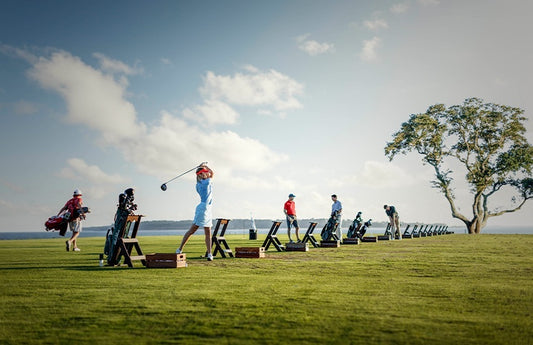When the GolfBallNut team is out on the courses, collecting used golf balls, we find a large variety of Soft and Hard golf balls. Do you know the difference in these lost goft balls we are finding? This article will help you understand the difference between Hard and Soft golf balls.
Choosing a soft or hard golf ball affects your performance, such as the distance traveled, spin, and control.
While most golf balls look similar, each is uniquely made with cover materials, compression ratings, and layers - all designed to create optimal performance and play.
Here’s the question: should you choose soft or hard used golf balls?
In this guide, we aim to settle the debate by sharing key differences between the two and how to choose the best type of golf ball based on personal skill level and preference.
“Soft” and “hard” indicates how the golf ball feels when it lands on the ground. Each ball has distinct characteristics that impact your play. Before you choose your new ball, you’ll want to consider its features.
Soft golf balls have a more delicate feel and touch. Hitting a softer golf ball causes a higher deformation based on the compression rating. Most manufacturers will label the compression rating on the product box, and soft golf balls have a compression rating from 35 to 65.
Softies generate a higher degree of spin than firmer balls, allowing a more controlled shot for skilled players. These balls also come to a faster stop on the green for optimal distance control.
Hard golf balls have a firmer core than their softer counterparts, which is why they have a higher compression rating, ranging from 65 to 120. Regarding performance attributes, firm balls have more side spin, a lower launch, and greater durability. While hard golf balls perform well, they’re more challenging to compress in colder temperatures.
Choosing the Best Type of Golf Ball for Your Skill Level
You’ll want to pick a golf ball based on your existing skill level - specifically your swing speed. This will help you pick a ball with the appropriate compression rating to suit your needs.
Don’t be afraid to experiment! If you’re willing to test out different balls, you’ll have an easier time finding one that gives you an edge on the course.
However, always ensure you’re following the USGA rules regarding golf balls, so you don’t receive any penalties - especially during tournament play.
Beginner and Average Golfers
For beginner and average golfers, we recommend two or three-piece golf balls with a low to mid-compression rating. Many amateurs have a swing speed of under 95 mpg, making lower compression balls ideal.
New players prefer softer golf balls because they have a great feel and enhance performance. The lower spin rates from soft golf balls help to reduce the chances of slicing or hooking shots for better distance control.
Softer balls are also more forgiving than firmer balls. If a player fails to hit the center of the clubface, a softball won’t lose as much speed. Conversely, hard balls tend to lose more momentum on off-centered hits.
Do Softer Golf Balls Go Further?
Yes, softer golf balls generally travel further than hard golf balls. Softer balls allow players to gain extra distance off the tee without demanding a high swing speed. They’re also easier to control, allowing players to add spin to the ball and create more impact.
Knowing the differences between soft and hard golf balls can help you choose the best option for your game. Golf balls with additional layers are designed for more skilled golfers. However, the specific firmness of the ball will vary from player to player.
If you’re looking to level up your game, you’ll want to have the best golf gear and accessories to support your time on the green. GolfBallNut has a wide range of used golf balls to choose from. Shop our extensive collection today!


